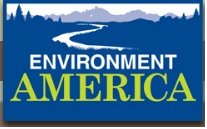Final EPA Study Concludes That Fracking Operations Can Contaminate Drinking Water
WASHINGTON – (RealEstateRama) — In a final report issued today, the U.S. Environmental Protection Agency concluded that fracking operations can impact drinking water “at each stage in the hydraulic fracturing water cycle”. The report walks back from a misleading summary statement that fracking poses “no widespread, systemic risks” to drinking water.
“EPA’s report confirms what experts and the science show: that fracking operations put our drinking water at risk,” said Rachel Richardson, director of Environment America’s Stop Drilling Program. “That families from Colorado to Pennsylvania have had their water contaminated from fracking should be evidence enough, but today’s report confirms: fracking puts our water at risk.”
Fracking can pollute our waterways at several points in the process – from spills of fracking fluid to leaks from surface equipment or wastewater impoundments, well blowouts, and the escape of methane and other contaminants from the well. In Pennsylvania, regulators confirmed at least 260 instances of private well contamination from fracking operations since 2005. Independent journalists at Public Herald identified2,309 complaints of pollution of private water wells from 17 out of the 40 Pennsylvania counties where fracking takes place.
The report, “Hydraulic Fracturing for Oil and Gas: Impacts from the Hydraulic Fracturing Water Cycle on Drinking Water Resources”, is a final version of the EPA’s draft assessment issued in June of 2015 that contained a summary statement suggesting that fracking has “not led to widespread, systemic impacts on drinking water resources”. Yet as early as 2013, Environment America’s “Fracking by the Numbers” report identified over 1,000 instances in which, according to state data, fracking and its toxic wastewater had impacted drinking water sources. Additionally, data gaps and evidence throughout the EPA’s draft assessment indicated water contamination due to fracking.
These inconsistencies were brought to the surface by the EPA’s own panel of experts, its science advisory board, tasked with peer reviewing the landmark study. In addition to taking issue with the widely-criticized topline finding, the SAB pointed to data gaps such as the exclusion of Dimock, Pennsylvania, Pavillion, Wyoming, and Parker County, Texas, where water became so contaminated that residents could no longer drink water from their own tap. They also cited ambiguity on how the EPA reached its conclusion.
The science advisory board’s peer review process was open to public comment in which scientists tasked with reviewing the study heard from impacted community members, health professionals, and the scientific community that took issue with the study’s conclusions.
Today’s final report shows that impacts to drinking water were found at every step of the fracking water cycle from water acquisition, chemical mixing, well injection, the handling of produced wastewater, to the disposal of wastewater.
Additionally, the EPA acknowledged that due to “data gaps and uncertainties”, the report doesn’t paint a full picture of the severity of fracking’s impacts or the frequency with which fracking contaminates drinking water sources.
“The conclusion that fracking posed no widespread risk dominated media coverage and was used as fodder by fracking proponents to excuse a practice that increases pollution and puts out communities at risk,” Richardson said. “We urge the EPA to take into account its own findings and address the urgent need to protect clean water from fracking’s harms.”
Environment America is a federation of state-based, citizen-funded environmental advocacy organizations. Our professional staff in 27 states and Washington, D.C., combines independent research, practical ideas and tough-minded advocacy to overcome the opposition of powerful special interests and win real results for the environment. Environment America draws on 30 years of success in tackling environmental problems
Contact:
Elizabeth Ouzts, , 919-672-9803
Rachel Richardson, , 971-570-1161


















